A good sailor has traditionally been a person who makes decisions that ensure that their ship, cargo and crew are safe. Good seamanship has not been synonymous with following procedures and doing everything by the book. Maybe just the opposite.
Opposing a set of rules that are perceived as irrelevant or written on land can almost be seen as part of the identity and professional pride of seafarers.
Today, the profession is undergoing radical change, and so is the seafarers’ own understanding of their role. New seamen and seawomen are trained to follow procedures, reducing the opportunities for them to exercise their discretion.
Seafarers perceive this development as a threat to safety.
Technology and procedures take over
“A lot of the practical work on board ship is embodied knowledge that needs to be learned through working with experienced seafarers. The formalized procedures seem to value this knowledge transfer less,” says Torgeir Kolstø Haavik from NTNU Social Research.
He and a research team at NTNU and Safetec, a provider of risk management services, have interviewed fourteen seafarers aged 22 to 62, and have documented their understanding of how the profession has changed.
The work was carried out as part of the “Professional competence, standardization and safety in aviation and the maritime industry” project.
“Technological and administrative changes in the work environment affect how we understand good seamanship and maritime safety. The bridge has seen a lot of new technology, including navigation and positioning,” says Haavik.
New technology has changed the work tasks in the engine room as well, with increased automation and data collection for use in on-land analyses. Most situations have technological solutions, such as keeping the boat in a stable position during loading and unloading at offshore installations.
All these innovations alter the professional competence related to safety. When navigators monitor the automatic systems instead of doing the navigating themselves, the classic nautical skills aren’t all needed or sufficient to do the job.
Out of practice using professional judgment
“The job and the tasks are changing. That’s a fact,” says Haavik. “And being able to follow procedures and monitor the technology is usually good enough.” But, he points out, operations at sea can involve other vessels, technical problems and demanding weather conditions that cause unforeseen situations that there aren’t any procedures for.
One of the sailors interviewed by the researchers puts it this way: “It’s almost like you’re not allowed to think for yourself anymore, because procedures take care of everything.” What the informant describes is a work situation that provides few opportunities for him to use the professional judgment he has acquired through experience. That judgment comes from training, and so sailors are not necessarily prepared if something arises that isn’t covered by the procedures.
The study findings indicate that the scope of administrative paperwork can be at the expense of critical safety tasks. And this phenomenon doesn’t only exist at sea.
“The room to maneuver, where you can exercise your professional judgment, is shrinking in a lot of professions,” says Haavik.
Concepts without content
The Norwegian Maritime Code states that “The master shall ensure that the navigation and management of the ship accords with good seamanship.” But what exactly is “good seamanship”? New and experienced sailors have different views on this.
“It isn’t necessarily problematic in and of itself that a concept loses its content. But as long as both international and national regulations require “good seamanship,” and the Accident Investigation Board can conclude that “poor seamanship” has been exhibited, it would be interesting to know what the term means to the professionals. If the content is changing, it’s important for this to be captured and discussed,” Haavik says.
This article appears courtesy Gemini Research News, and it may be found in its original form here.
The opinions expressed herein are the author's and not necessarily those of The Maritime Executive.
BY GEMINI NEWS 11-22-2020 10:31:23
[By Guro Kulset Merakerås]








Comments (0)